Everything you need to know about backpacking in Chile, including costs, itineraries and places to visit.
It might have been voted South America’s leading adventure travel destination for the past two years running in the World Travel Awards, but few travellers actually make it to Chile.
One of the biggest barriers to backpacking in Chile is the price tag; there’s no escaping the fact that it’s one of the most expensive countries to visit in the continent, leading many budget-conscious travellers to head to other destinations.
But with attractions ranging from volcano-laced desert plateaus in the far north to hiking in world-famous national parks and even hitchhiking through barely-habited lands in Patagonia, Chile is the soul mate of anyone seeking an adventure.
READ MORE: Check out my complete guide on travelling in Chile for all the best tips.
Table of Contents
Backpacking In Chile
Unlike in many of its neighbouring countries, backpacking in Chile is relatively straightforward, thanks to a well-developed (and fairly reliable) system of buses, modern facilities and a greater proportion of English-speakers, particularly in cities around the capital.
Bear in mind that Chile is a crazily long country with over 4,000 km of coastline and distances between destinations are far and often involve either an overnight bus or a short flight.
But those who travel the length and breadth of this (albeit very skinny) land are rewarded with incredible natural places and unique and unforgettable adventures.
General Advice For Backpacking In Chile
Languages
- Like most of the rest of South America, Spanish is the official language and while you’ll likely encounter English speakers in Santiago, knowing at least the basics of Spanish is essential.
- That said, the Chileans are renowned for having the most difficult Spanish to understand in all of South America, littered as it is with slang phrases such as ¿cachai? (get it?), ¿cómo estai? (how are you?) and a liberal use of po (yeh?) at the end of every sentence.
- Further south of the capital and into Patagonia you’ll meet few people with more than a basic grasp of English, so take a good phrasebook or spend time studying before you go.
Staying Healthy
- Tap water in most places in Chile is safe to drink, just double check with your hostel before you do.
- I’ve personally not been ill in eight months of living in Chile (which has been a real treat after my bout of salmonella in Bolivia). Street food and restaurants generally have better levels of hygiene than in other South American countries, but always choose a stall or a restaurant with plenty of other customers as your best guarantee against getting sick.
Food And Accommodation
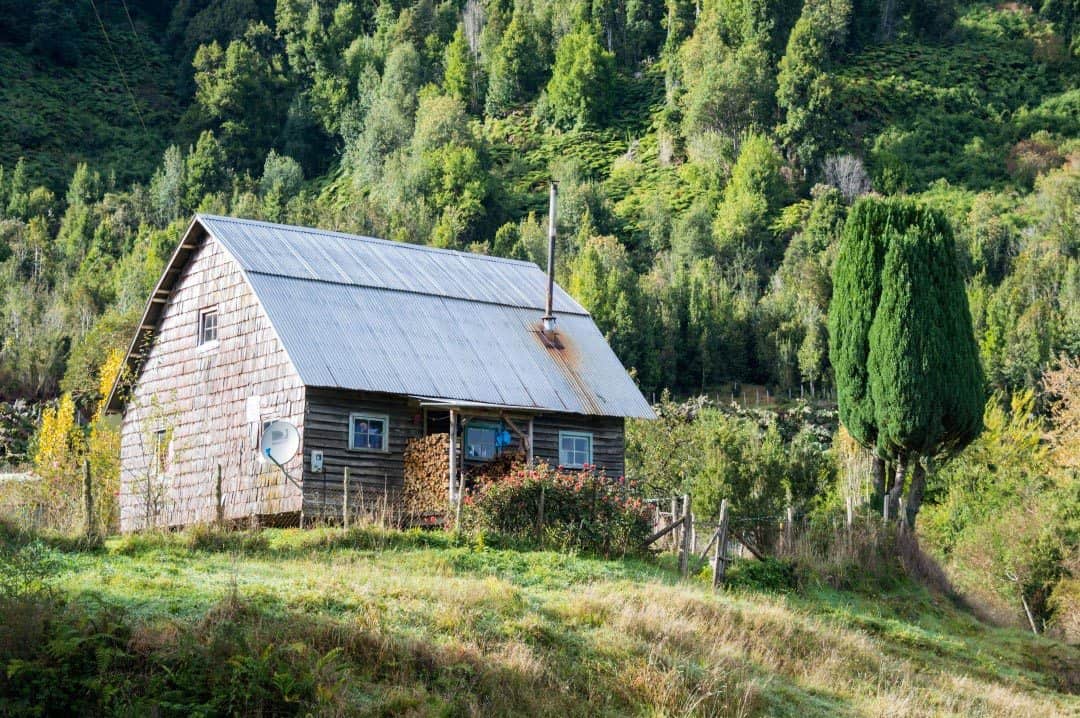
- Food is expensive in Chile, even if you decide to self-cater. In the capital, groceries in supermarkets cost as much as in Europe or the US and traditional markets are few and far between. In small towns and cities, you’re more likely to find markets where fruit and vegetables can be bought for a cheaper price.
- Expect to pay between 5.000 CLP and 8.000 CLP for a main meal in a restaurant, with prices around 20% higher in Patagonia. (Note: As of February 2017 US$1 = 640 CLP)
- You can also get street food, such as empanadas – pastry casings filled with meat and potatoes (empanadas de pino), cheese (empanada de queso) or seafood (empanada de mariscos)
- Accommodation prices range from between 6.000 CLP and 15.000 CLP for a bed in a hostel dorm. Luckily, hostels normally do have fully-equipped kitchens.
- It’s not uncommon to find hospedajes, alojamientos and cabañas in more rural parts of Chile. Hospedajes and alojamientos are family homes that rent out private bedrooms at a lower fee than most hostels. Cabañas are small cabins, often with space for between four and six people and with a kitchen and facilities included. These are very cheap if you are sharing with a group of people.
Safety in Chile
- Chile is one of the safest places to travel in South America, although due caution, as always, is necessary in the capital.
- I’ve heard of people having their phones stolen on the metro or out of their hands when walking down the street, particularly in tourist hotspots such as Bellavista, a neighbourhood in the centre of the city.
- Outside of the capital, people are generally very friendly and keen to look out for your safety, particularly in Patagonia which is often cited as one of the safest places to travel in the world.
Important Note! Before you book any international trip, we honestly recommend getting travel insurance. You never know when things will go wrong, and medical bills can add up quickly if you get sick or injure yourself overseas.
Our personal recommendation based on our own experience is World Nomads.
Transport in Chile
- Buses are the main form of transport used by backpackers in Chile and they cost a similar amount as in neighbouring Peru, despite being a higher standard. Expect to pay around 20,000 CLP for a 12 hour bus journey. You can choose between semi cama (a seat that reclines 140˚) and cama (a seat that reclines 160˚ and which has more legroom), the latter being more expensive.
- Internal flights are cheap, particularly when booked a few months in advance. For longer distances, it is often more economical to fly than take the bus so always do you research before buying.
- Car rental is another possibility, although be aware that prices are higher if you plan on picking up the vehicle in one place and dropping it off in another. You also need to organise special insurance to travel into Argentina and this must be done at least a week before you pick up the car.
- Hitchhiking is a very cheap way of travelling around the country, particularly along places such as the Carretera Austral in the Aysén Region. Young Chileans use hitchhiking or a dedo as their standard way of travelling around the country and people are very quick to offer you a lift in their cars. I’ve personally had some wonderful experiences of hitchhiking and have learnt so much more about Chile as a result.
The Five Best Cities to Visit in Chile
Valparaíso
If you’re flying into Chile, don’t expect to be wowed by the capital, Santiago. Instead, head due west to bohemian Valparaíso, a seaside city sprawled across a series of hills and connected to the coast by funicular railways.
Top attractions in what is indisputably the Chilean capital of cool include wandering through the city’s labyrinth streets admiring the mishmash of graffiti and political painting daubed on buildings at every street, particularly around Cerro Alegre.
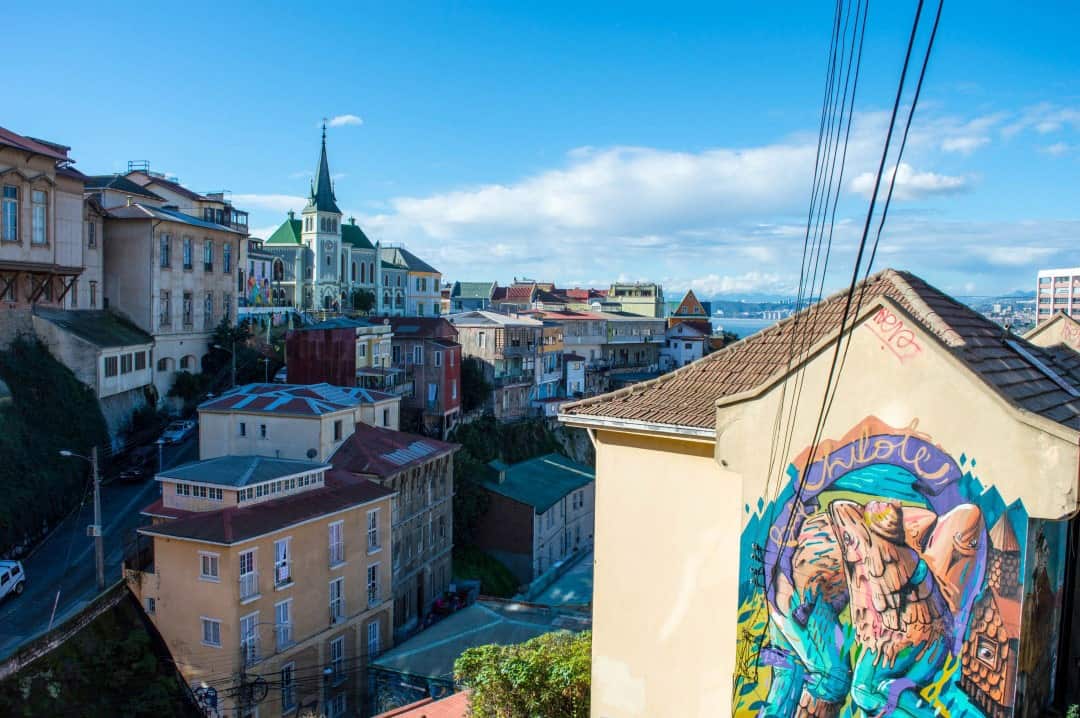
You should also learn about Valpo’s most famous former resident, Noble Prize-winning poet, Pablo Neruda at his wacky residence, La Sebastiana on Cerro Florida. The views across the city and down to the coast from his bedroom window take some beating.
Recommendations for places to stay in Valparaíso:
La Valija
Located right in the centre of Cerro Alegre and easily connected to the rest of the city with one of the funiculars, I found La Valija to be a really comfortable and chilled place to stay when I visited Valparaíso. Book it here.
Recommendations for places to eat in Valparaíso:
Casa Cervecera Altamira
We stumbled upon this restobar and were rewarded with craft beer, delicious desserts and jazz music. The rest of the menu looked pretty exciting too!
Punta Arenas
If you’re planning a trip to Patagonia when backpacking in Chile, it’s likely you’ll find yourself in Punta Arenas, the region’s largest city. From here it’s possible to reach some of the most exciting adventure activities, including a day trip out to Magdalena Island, the home of a 120,000-strong Magalenic penguin colony where you can even wander between the bird’s burrow.
You can also go kayaking in the fjords around the city or just prepare yourself for the most exciting treks of all, the W or Circuit in nearby Torres del Paine National Park by visiting the Zona Franca in the north of the city where you can stock up on food for your trek at prices that are tax-free.
Check out our guide on backpacking in Patagonia on a budget.
Recommendations for places to stay in Punta Arenas:
Hospedaje Costanera
This family home serves as a budget place to stay in Punta Arenas and although it’s a little bit of a walk from the centre, it’s comfy and has an excellent breakfast. Book it on Hostelworld.
Recommendations for places to eat in Punta Arenas:
La Marmita
With local dishes such as King crab and lamb and a number of veggie options, La Marmita is always a good bet when you’re in Punta Arenas and looking for some hearty – and delicious – food.
Pucon
Probably the most popular city for those backpacking in Chile, Pucon can feel a little bit busy for those wanting a relaxing stay in the country. But if you’re after high-adrenaline adventures, few places can rival Pucon.
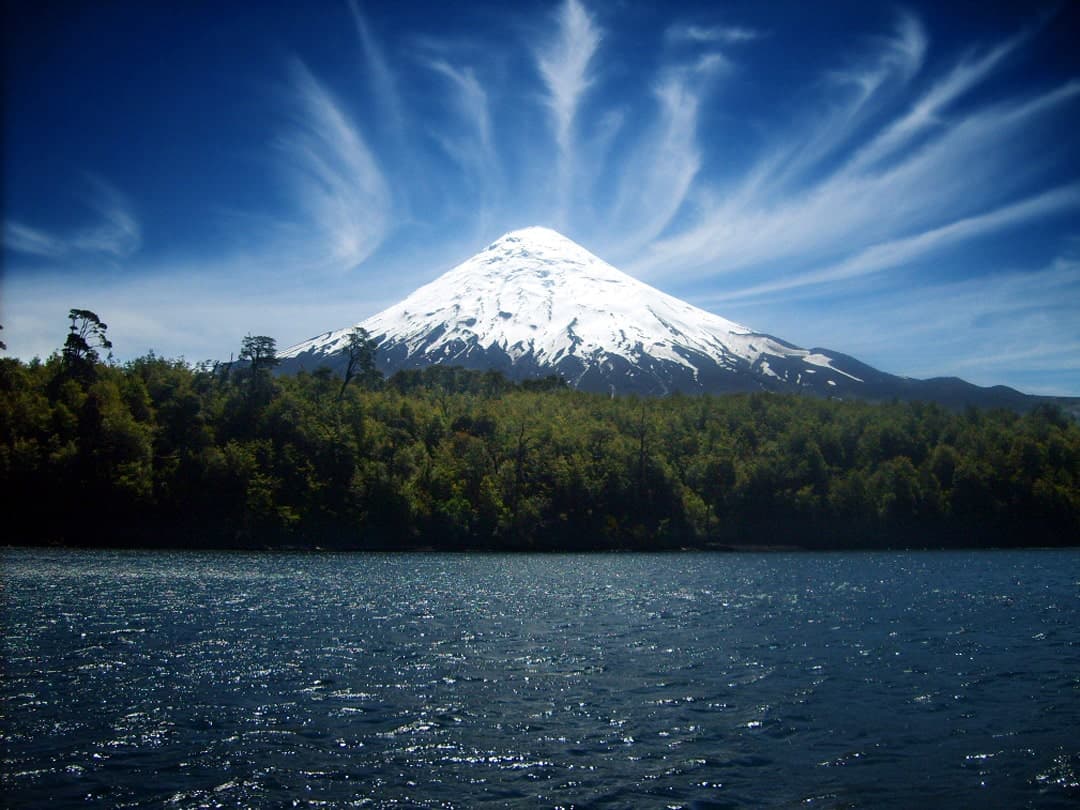
Not only does it sit in the shadow of active, and climbable, Volcano Villarrica, it’s within a short bus ride from kayak adventures and treks past the shimmering lakes of Parque Nacional Huerquehue.
Oh, and there are plenty of hot springs for soothing any tired muscles after enjoying all of these attractions.
Recommendations for places to stay in Pucon:
Chili Kiwi Lakefront
Although I never personally stayed here, I’ve heard excellent things about this hostel. Located right by the lake, visitors can sleep in a hobbit hole or a treehouse and are guaranteed to meet plenty of other travellers to join you on activities and tours. Book it on Hostelworld.
Recommendations for places to eat in Pucon:
¡école!
Pucon is certainly not a cheap destination for backpackers and the restaurants along the main road in town charge steep fees for lunch. Instead, head to ¡école! in the backstreets.
It’s a small vegetarian restaurant with delicious dishes and cheap deals on lunchtime menus.
Puerto Varas
Sat beneath the majestic Osorno Volcano, Puerto Varas is one of the country’s prettiest towns and a must-visit when it comes to backpacking in Chile.
Not only can you hike up the volcano, but there are plenty of other trekking and day-trip options, which are made even better by how comfortable – and welcoming – this German-influenced settlement feels.
My favourite trips included Saltos de Petrohué, an impressive system of waterfalls that wash through volcanic rock and a self-guided hike around the base of Volcano Osorno.
If you rent a car, you can drive almost to its top or just explore the countryside in what is a really beautiful and green part of Chile.
Recommendations for places to stay in Puerto Varas:
Compass Del Sur
This large house at the top of the hill (but still a short 5-minute walk from the lakefront) is so good I ended up staying there for over a week when I was passing through Puerto Varas.
Breakfast is hearty with homemade jam, bread and cake, the kitchen is huge and well-equipped and the rooms are spacious and spotless. Book it on Hostelworld.
Recommendations for places to eat in Puerto Varas:
Mesa Tropera
If you fancy splashing out a bit (and having one of the best pizzas you’ll eat in Chile), head over to Mesa Tropera, worth it not only for the restaurant’s locally-brewed craft beer but for its incredible vantage point over Lake Llanquihhue.
Also, check out the food trucks just off the side of the plaza for cheap (and tasty) eats.
San Pedro de Atacama
Few places in South America are as gob-smackingly otherworldly as the Atacama Desert and so it’s no surprise that adventurous travellers land in San Pedro de Atacama in their droves.
Check out the world’s highest geothermal field, the El Tatio Geysers (most spectacular at dawn), see three species of flamingo wading through saline lakes at the salt flats or venture to the more off-the-beaten-path spots, Lagunas Miscanti and Miñiques.
Here’s our list of the best things to do in San Pedro de Atacama.
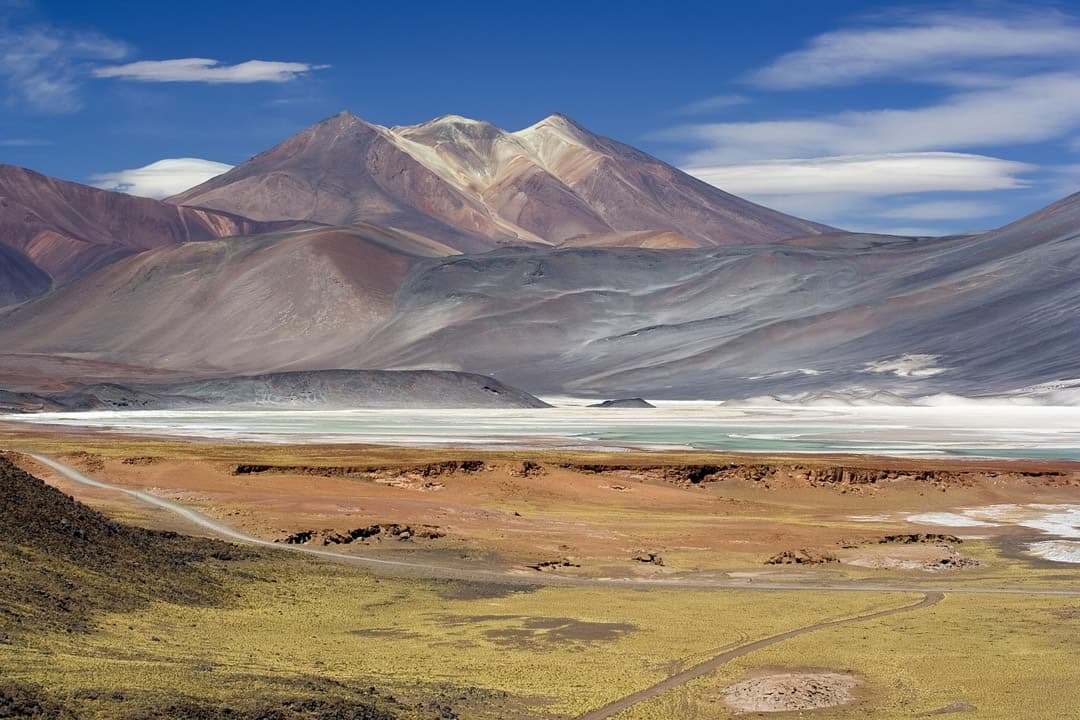
If you visit between December and February, expect the town to be fairly jam-packed and temperatures the hottest.
Given it’s a desert, the weather is good all year round, just remember it gets cold at night and the area’s altitude (2407m above sea-level but going much higher at points) can cause feelings of nausea. Just drink plenty of water and don’t try and walk too quickly!
Recommendations for places to stay in San Pedro de Atacama:
Hostel Eden Atacameño
We found this hostel by accident after realising that most of those available on online booking sites were heavily overpriced.
Cheap if you’re in a pair or a three, this hostel has a kitchen, a few hammocks and relaxed places to hang out and decent wifi. Check it out on TripAdvisor.
Recommendations for places to eat in San Pedro de Atacama:
Food in San Pedro de Atamaca is expensive (you’re in the middle of a desert after all). My advice is to wander down some of the side streets leading off the main street, Caracoles and try and make the most of menu del día options where a two-course lunch and a drink can be your most affordable option.
Top Adventure Activities When Backpacking In Chile
Climb Volcano Villarrica
Ever climbed an active volcano? No? Well, here’s your chance. Strap on a pair of crampons, grab your ice axe and scale Volcano Villarrica.
Accessible by guided tour from Pucon, Volcano Villarrica can be visited during most of the year. Time your visit for the end of the hiking season (March through May) when the volcano is full swing, with lava spurting from the cone when you reach the top, or go at the beginning of the season (October through December) when the winter snowfall still lies thick on the sides of the volcano and it’s possible to slide almost all the way down on your behind.
There are plenty of companies organising trips up the volcano with a price set by the local authority at 85,000 CLP. Yes, this is fairly steep, but unless you’re heading into Central America or neighbouring Peru, this is the chance for gaining the ultimate in bragging rights.
Book this awesome tour on Viator.
Trek through the Eighth Wonder of the World, Torres del Paine National Park
Many people choosing to go backpacking in Chile do so in order to visit one national park: Torres del Paine.
Located in the far south of the country close to the Argentine border, it’s a hiker’s paradise, where unspoilt glacial landscapes, windswept lakes and pumas, condors and guanacos abound and has wowed so many international travellers that it was voted the Eighth Wonder of the World.
Visitors to the park have two main options: hike the most famous trail, the ‘W’, a four-day trek seeing the most lauded parts of the park, Glacier Grey, Valle Frances and the granite towers after which the park is named, or be more adventurous and go for the Circuit.
This eight- to ten-day is a far more challenging option; you have to carry all of your food and camping equipment as for the most part there are only very basic facilities available.
But it’s worth the discomfort of lugging a lightweight backpacking tent through the Patagonian wilderness; not only will you have uninhibited views of the Southern Patagonian Ice Field, but you’ll be camping far, far from civilisation in the silent steppe.
Just make sure you book ahead if you’re planning on hiking in high season (December through March) as the campsites get reserved very quickly. Book with Fantastico Sur and Vertice Patagonia for most of the campsites, although there are a handful of free ones that must still be reserved in advance with the park administrators, CONAF.
Stick your thumb out and hitchhike the Carretera Austral
Although backpackers head directly to Torres del Paine when visiting Chilean Patagonia, another lesser-known adventure is hitchhiking along the Carretera Austral.
As the region’s only road, and one that remains unpaved in most parts, it’s most definitely an adventure travelling a dedo through some of Chile’s most remote, uninhabited lands.
Starting in Villa O’Higgins, a small cluster of buildings on the border with Argentina, the Carretera Austral winds 1240km north to Puerto Montt, stopping in a series of tiny communities and utterly spectacular areas of natural beauty.
My personal favourites of travelling the Carretera Austral were camping in Queulat National Park to see the Hanging Glacier at sunset and hiking around Futaleufu, somewhere better known for its world-class rapids
Not only is it an unbeatable chance to meet local people but the Carretera Austral is a necessary undertaking for the most adventurous who’ve come backpacking in Chile.
Bring a tent and camp under the stars in a CONAF campsite or a wild spot by the side of the lake and see Chile as few others have done before.
Jump aboard and sail through the serene Chilean fjords
If you’re planning on heading into Patagonia, it’s worth checking out different forms of transport than just bus and plane. The Navimag ferry is a non-frills boat that transports people, cargo and even animals from Puerto Montt at the top of Chilean Patagonia to Puerto Chacabuco (close to one of the largest towns on the Carretera Austral, Coyhaique) or further south to Puerto Natales (and Torres del Paine National Park).
Weather dependent, you can expect to putter through the Chilean fjords, followed by a Chilean or Peal’s dolphin or two and even a humpback or blue whale. Don’t expect anything luxurious, but instead just sit back and enjoy the ride.
It’s necessary to book in advance during the Austral summer (December through March) and the longer route to Puerto Natales only runs during this season.
Bring sun cream and a book for lazy afternoons hanging out on the top floor of the boat and a good camera for keeping an eye on the coast as the shore passes between looming volcanoes to ancient forest and tiny fjordside communities.
Want more of a high-end experience? Have a look at our experience on a Chilean glacier cruise with Skorpios.
Fly to Easter Island and encounter volcanoes and maoi monoliths
Just under 4,000km from the Chilean capital sits Rapa Nui or Easter Island. This really is the icing on the cake when it comes to backpacking in Chile; this UNESCO World Heritage has become increasingly more accessible thanks to direct flights from Santiago to the tiny Hanga Roa airport.
Here’s the best things to do in Easter Island.
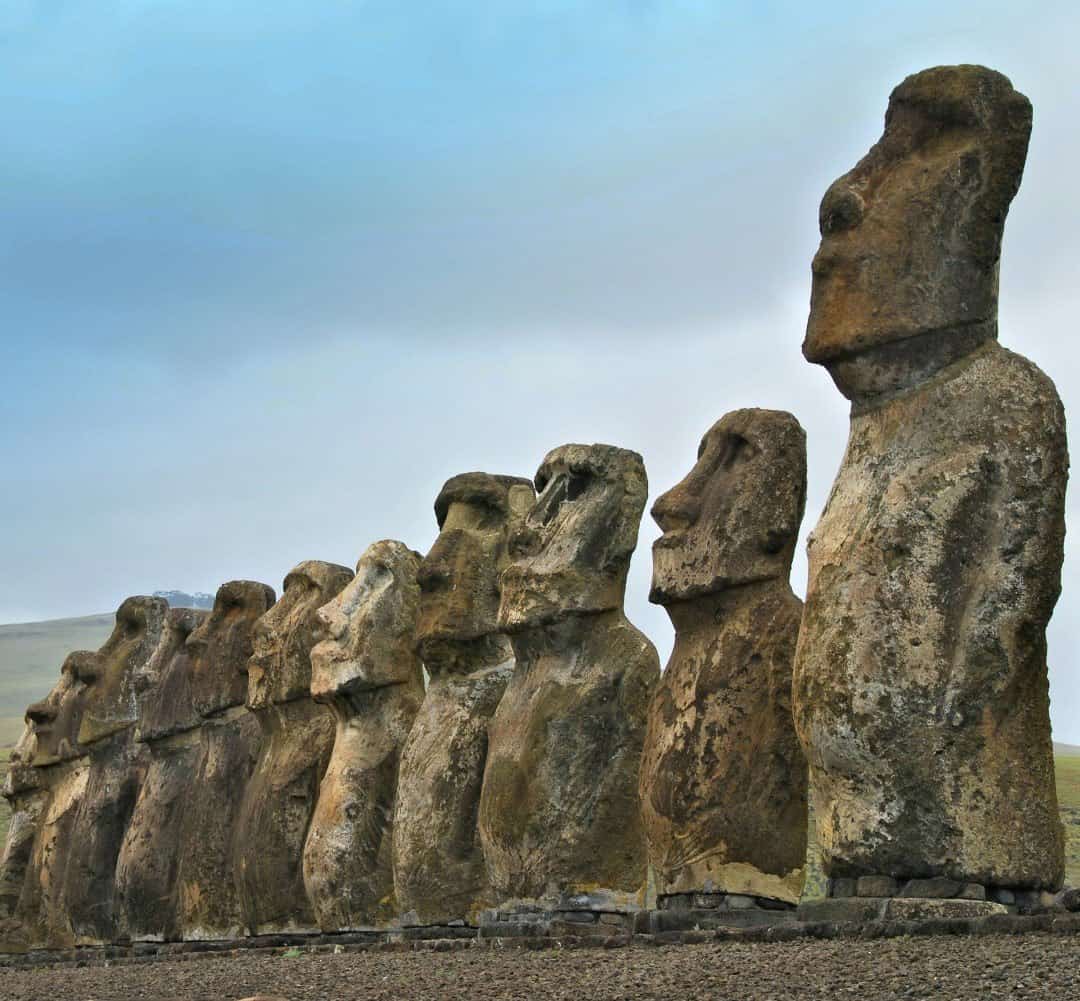
The Chilean mainland certainly feels far away after the five and a half hour flight to arrive and it’s hardly worth mentioning that the first peek of the stone maoi staring out to sea is enough to make the hairs on your arms stand on end. But this island has plenty more to give.
Climb to the crater of Rano Raraku, the top of a 300m high extinct volcano to see the quarry where many of the statues were carved and indeed some still remain half-finished, and then summit Rano Kau, where you’ll find its crater filled with rainwater and glimmering in the sunshine.
Although adventures in this remote offshoot of Chilean territory are a little easier to come by these days, don’t expect a trip here to be cheap. Expect to pay upwards of $250,000 CLP for flights and set aside a budget of at least $35,000 CLP per day for food and accommodation.

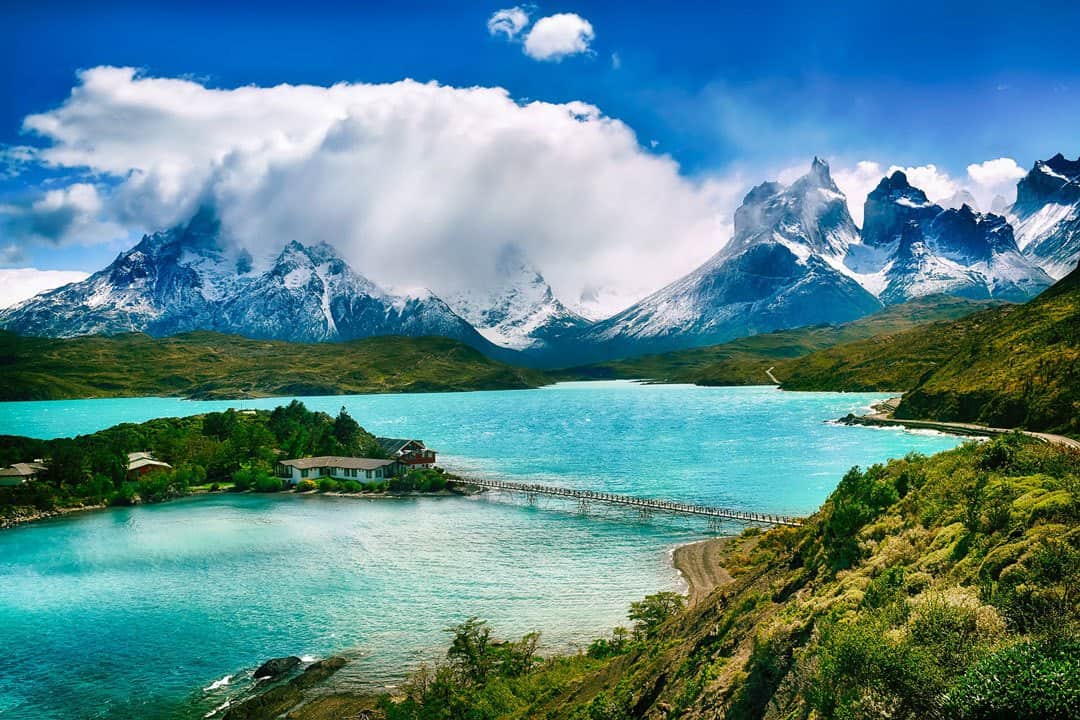

4 thoughts on “Backpacking in Chile – The Ultimate Travel Guide [2024]”
Great artcile and thank you for the tips!
Chile is an amazing country and I strongly recommend a visit!
Thank you so much for reading. Chile is a very beautiful country
Love this guide! We’re over that way in September and so glad to have this extra info in my head now.
Thank you so much Jean. Steph wrote a great guide. We are here now and Chile is so beautiful. We just finished hiking in Torres del Paine. We hiked the O Circuit. We highly recommend the park. It is incredible. We can not wait to explore the from here up to the very north. Thanks for your comment. Enjoy your trip to Chile. 🙂